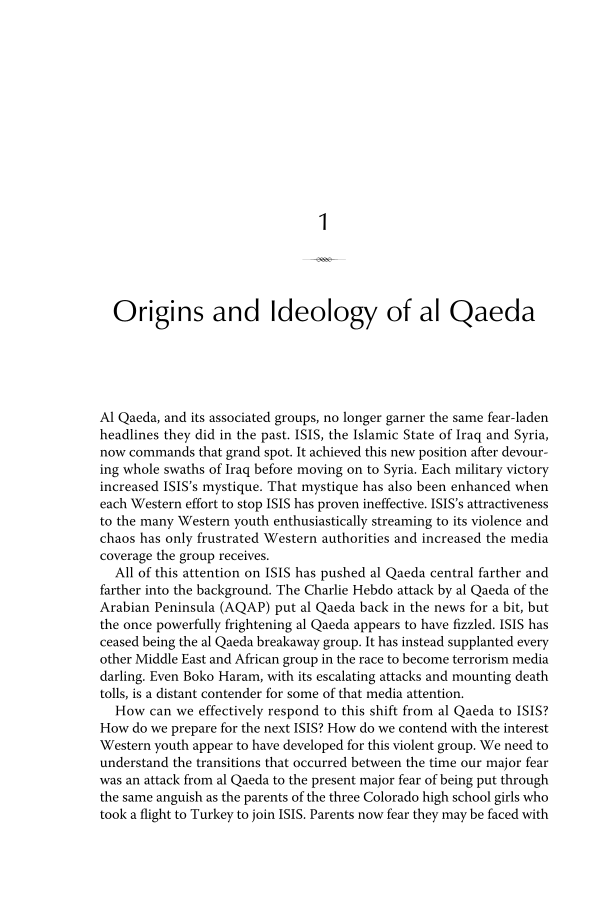1 R Origins and Ideology of al Qaeda Al Qaeda, and its associated groups, no longer garner the same fear-laden headlines they did in the past. ISIS, the Islamic State of Iraq and Syria, now commands that grand spot. It achieved this new position after devour- ing whole swaths of Iraq before moving on to Syria. Each military victory increased ISIS’s mystique. That mystique has also been enhanced when each Western effort to stop ISIS has proven ineffective. ISIS’s attractiveness to the many Western youth enthusiastically streaming to its violence and chaos has only frustrated Western authorities and increased the media coverage the group receives. All of this attention on ISIS has pushed al Qaeda central farther and farther into the background. The Charlie Hebdo attack by al Qaeda of the Arabian Peninsula (AQAP) put al Qaeda back in the news for a bit, but the once powerfully frightening al Qaeda appears to have fizzled. ISIS has ceased being the al Qaeda breakaway group. It has instead supplanted every other Middle East and African group in the race to become terrorism media darling. Even Boko Haram, with its escalating attacks and mounting death tolls, is a distant contender for some of that media attention. How can we effectively respond to this shift from al Qaeda to ISIS? How do we prepare for the next ISIS? How do we contend with the interest Western youth appear to have developed for this violent group. We need to understand the transitions that occurred between the time our major fear was an attack from al Qaeda to the present major fear of being put through the same anguish as the parents of the three Colorado high school girls who took a flight to Turkey to join ISIS. Parents now fear they may be faced with
Document Details My Account Print multiple pages
Print
You have printed 0 times in the last 24 hours.
Your print count will reset on at .
You may print 0 more time(s) before then.
You may print a maximum of 0 pages at a time.









































































































































































































































































